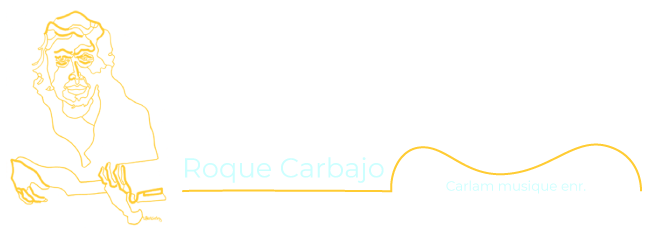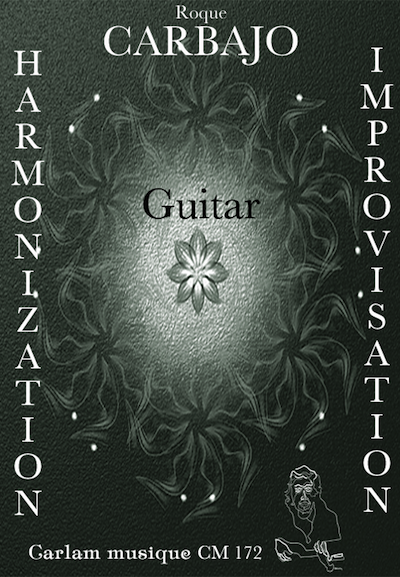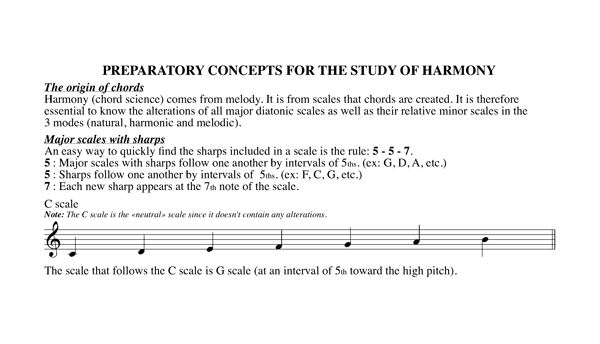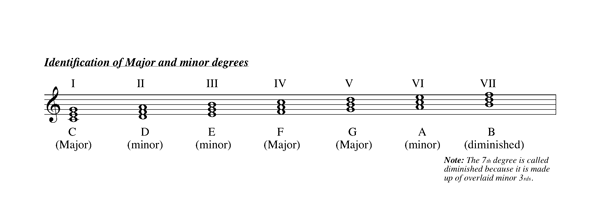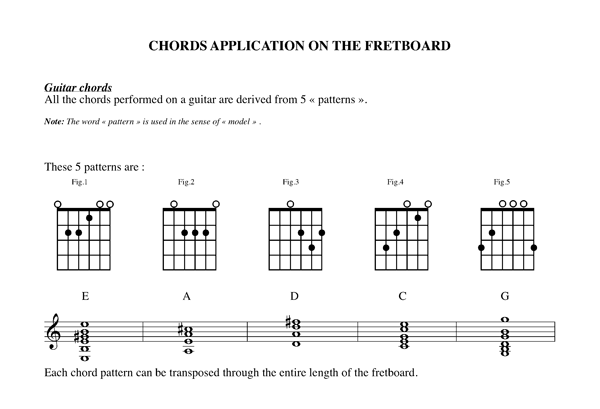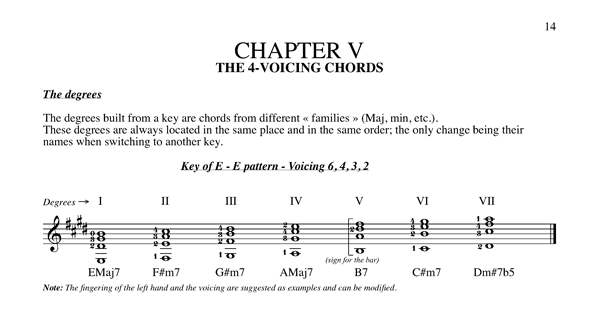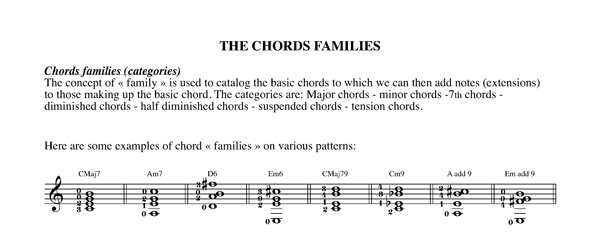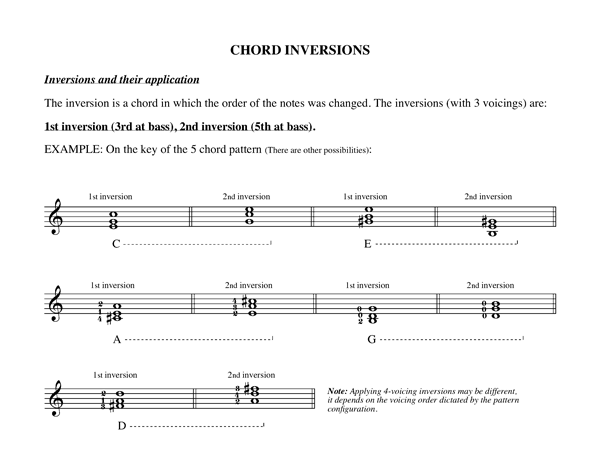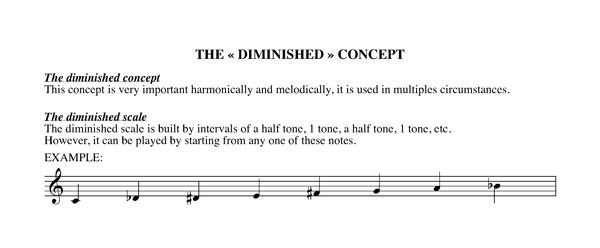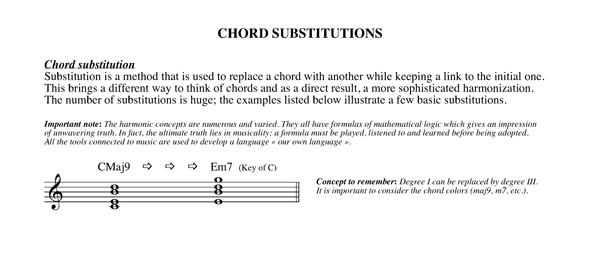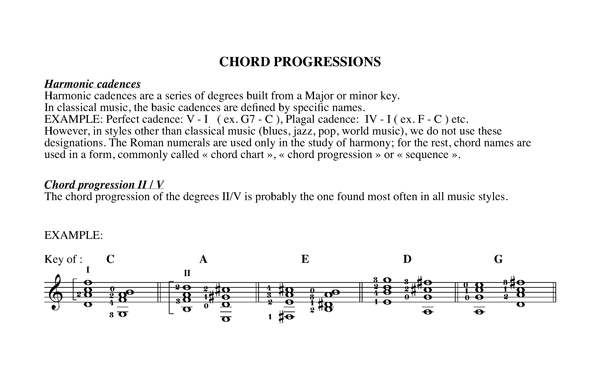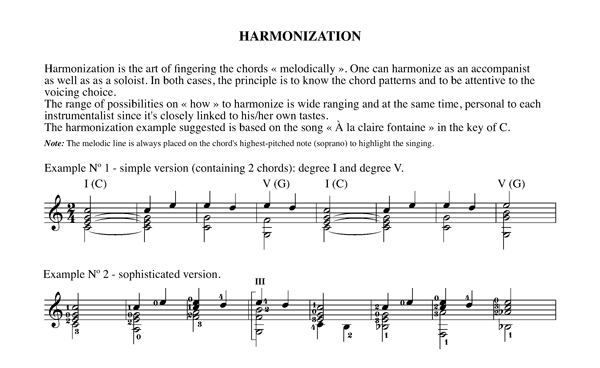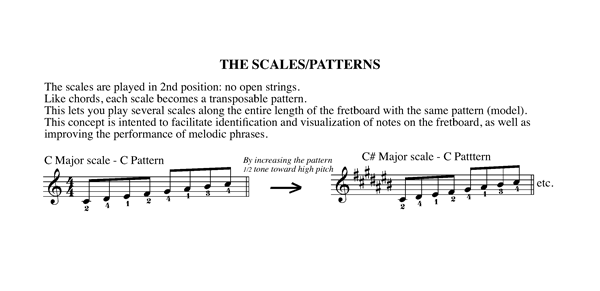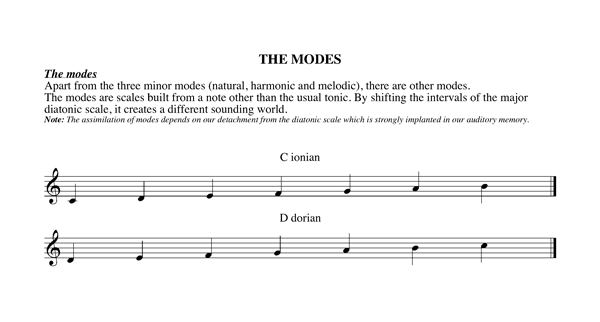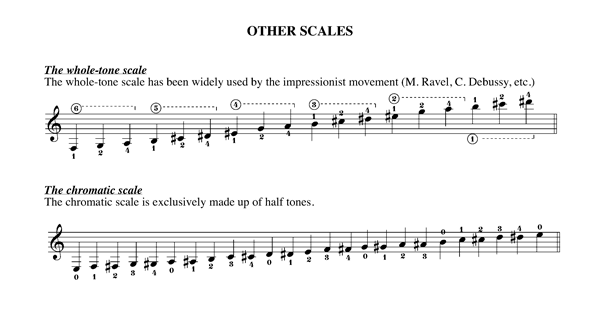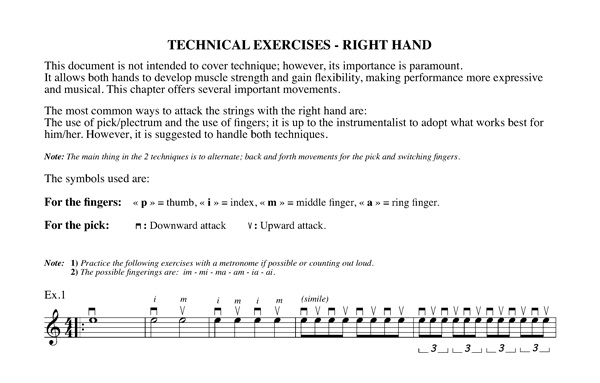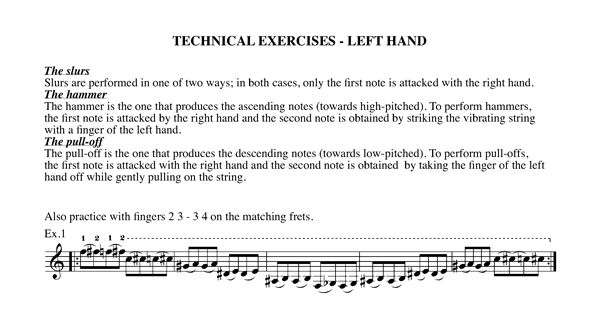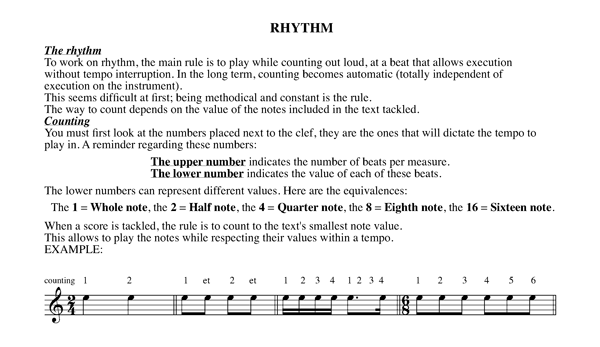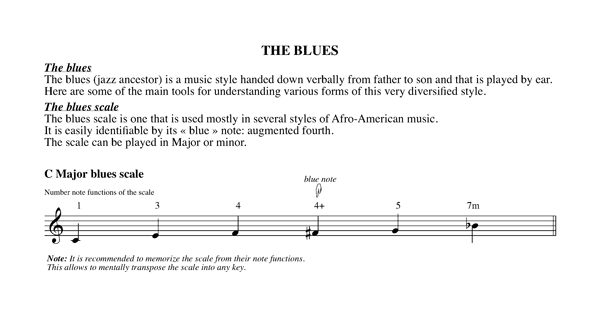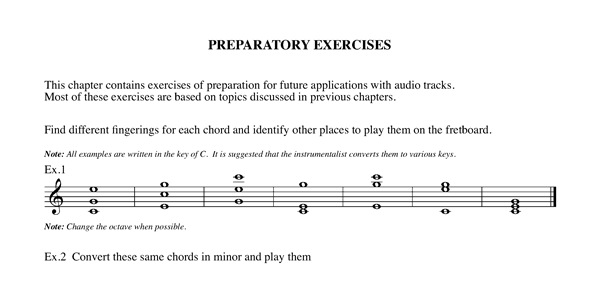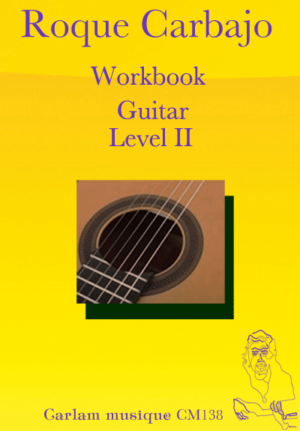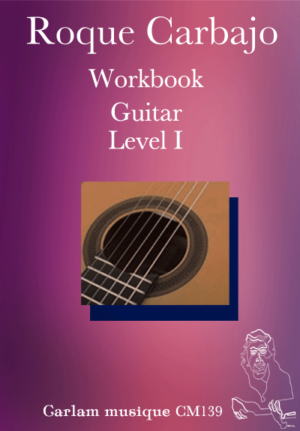Chapter preview
- Major diatonic scales
- Accidentals sharps and flats
- The origin of chords
- Relative minor scales
- The minor modes : natural, harmonic and melodic
- Visual and mental exercises ; their applications on the guitar.
- The 3 sound chord composition
- Chord building (degrees) from all major diatonic scales and minor scales in 3 modes (natural, harmonic and melodic).
- Practical exercises.
- The embellishment of chords with 4 sounds
- The 3 types of 7th chords
- Chords building (degrees with 4 notes) from all major diatonic and minor scales in 3 modes (natural, harmonic and melodic)
- Identifying and naming chords
- Practical exercises.
- The 5 chord patterns
- The transposition of chord patterns in the fretboard
- The configuration of the 5 chord patterns
- Modifying a chord from its basic pattern
- The choice of voicings during the execution of chord patterns
- The insertion of 7ths, their location and application on the chords patterns
- Revision of the main elements of chapters I to IV.
- The 7 degrees (chords) in 4 voices (tones) on the 5 chord patterns
- The application of 7 degrees on all major and minor keys
- Suggestions of voicings for the execution in the right hand
- Identification of the nature of degrees (maj, min, etc.) and their name
- Exercises applied to the instrument.
- Chords families (categories)
- Embellishment notes (colors)
- The extensions
- Suspended chords
- Altered or tension chords
- Secondary dominants
- Identification of chords, their composition and their symbols
- Exercices applied to the instrument.
- The diminished scale
- Building chords on the diminished scale
- Diminished chords and their application on the various patterns.
- The various basic substitutions and their link
- Applications on various chord patterns
- Revision of the main elements of chapters V to IX..
- Work of harmonization on a known theme
- Exposure of the harmonized theme (simple version)
- Exposure of the harmonized theme (sophisticated version)
- Analysis of the sophisticated version.
- The major diatonic scales with sharps and flats
- The relative minor scales.
- The 7 modes (ionian, dorian, phrygian, lydian, mixolydian, aeolian, locrian)
- Exercises applied to the instrument.
- The diverse symbols used to indicate attacks produced by the right hand (fingers and pick)
- Exercises applied to the instrument.
- The blues scale (major and minor) and the function of it’s notes
- The « blues » eight notes
- The chords used in blues
- The structure (sequence) of the traditional blues
- The various chord extensions linked up with « jazz » blues
- Exercises applied to the instrument.
- Exercises for the identification of the chords, their location on the fretboard and their various fingerings
- Mnemonic formulae based on the fonction of the notes of the scales wich allow « to think the notes »
- Explanation et exercises based onchord arpeggios
- Exercises on the rhytmic formulae.
EXAMPLE TRACK 2 You have to play the chords proposed in the method with accompaniment (bass and drum) – style “swing”. TRACK 2
EXAMPLE TRACK 3 You have to play on a ternary rythm the phrases proposed in the method with accompaniment (piano, bass and drum)- style ” jazz waltz “.. TRACK 3
- Section harmony: an understanding and an application of various chord progressions.
- Section melody: an understanding and an assimilation of the melody, its execution with various parameters studied in the previous chapters.
- Harmonization :harmonize the melody and reproduce it in a version a soloist.
NOTE :The tracks 1, 2 and 3 below, are in video format only as examples. The original tracks include in this method are in MP3 format. ” OLD TIME “
” PRA VOCÉ “
” SEA BLUES “
Method Harmonization and improvisation
I have designed this document in order to share my point of view and to deal with the different basic harmonization and improvisation tools. The way we harmonize and improvise is individual, depending on the choice of chords, melodic phrases, etc. A question of taste! At the beginning, the challenge is to learn the basic musical tools and, most important, to constantly keep them in mind in order to be able to use them at any time. The concept is simple but broad; its many ramifications and connections (keys, chord substitutions, etc.) easily become a kind of maze if we are not methodical. The goal is to create a path for ourselves which in the long term will become automatic mental and visual reflexes. THIS METHOD IS INTENDED FOR:
- To all those who need the necessary tools (knowledge and ability to read chord charts, improvization, etc.) to enter the work force as a musician other than that of the environment of the classical music.
- To all those who play music from scores and feel the need to analyze what they are playing.
- To all who wish to get out of their usual chord range to harmonize, compose, etc.
The practice tools described in this document are primarily based on jazz and brazilian music but the concepts apply to music in general, whatever the style.
38,99$ CAD
Included in the download
20 chapters in PDF format (standard notation) 70 MP3 files
